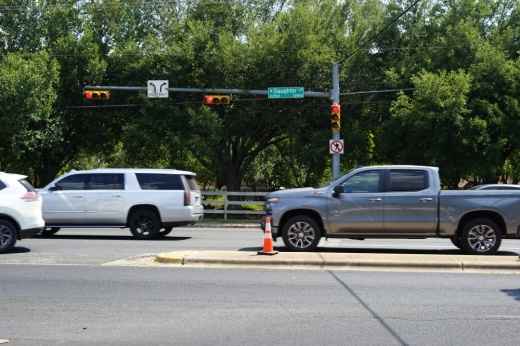Efforts to make intersections safer are particularly relevant, as Vision Zero data shows over a third of traffic collisions between 2017 and 2021 occurred at signalized intersections.
“Think of major intersections: high speeds, high volumes, a lot of conflict points. All of those are the conditions that lead toward a higher likelihood of severe injury or death and just high risk generally,” said Lewis Leff, Vision Zero’s lead traffic safety officer.
Since 2016, ATD completed safety improvements on 19 separate intersections in Austin for drivers, bicyclists and pedestrians. ATD added green protective arrows and flashing yellow arrows for left-turners. Crews increased crosswalk visibility, bicycle signage and added bicycle detection. To decrease accidents that happen from running red lights, they adjusted clearance times for red and yellow lights and added flashing warning signs.
Vision Zero analyzed 13 of the 19 improved intersections at which it had at least one year of crash data. Results show that serious injuries and death decreased substantially among every category of safety improvement: red light-running crashes; rear-end crashes; bicycle and pedestrian crashes; and access-management crashes, which are caused by poor driveway placement.
Visions Zero’s safety report explains these results should be interpreted as “early, but promising findings,” as the organization usually conducts studies with at least three to five years of crash data, rather than one.
While overall serious injuries, fatalities, and collisions are all increasing from last year, Vision Zero officials are taking small steps in the right direction, according to Leff.
“I think it's going to take a different, maybe stronger, more transformative approach to the designs that we put out there for intersections [and] segments of road that had severe crashes,” Leff said. “And being able to really push that needle forward is going to take a lot of time and effort and resources, but I think we're on that track.”





